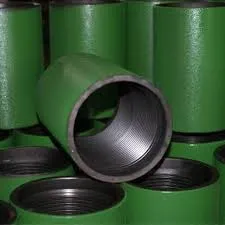- Afrikaans
- Albanian
- Amharic
- Arabic
- Armenian
- Azerbaijani
- Basque
- Belarusian
- Bengali
- Bosnian
- Bulgarian
- Catalan
- Cebuano
- Corsican
- Croatian
- Czech
- Danish
- Dutch
- English
- Esperanto
- Estonian
- Finnish
- French
- Frisian
- Galician
- Georgian
- German
- Greek
- Gujarati
- Haitian Creole
- hausa
- hawaiian
- Hebrew
- Hindi
- Miao
- Hungarian
- Icelandic
- igbo
- Indonesian
- irish
- Italian
- Japanese
- Javanese
- Kannada
- kazakh
- Khmer
- Rwandese
- Korean
- Kurdish
- Kyrgyz
- Lao
- Latin
- Latvian
- Lithuanian
- Luxembourgish
- Macedonian
- Malgashi
- Malay
- Malayalam
- Maltese
- Maori
- Marathi
- Mongolian
- Myanmar
- Nepali
- Norwegian
- Norwegian
- Occitan
- Pashto
- Persian
- Polish
- Portuguese
- Punjabi
- Romanian
- Russian
- Samoan
- Scottish Gaelic
- Serbian
- Sesotho
- Shona
- Sindhi
- Sinhala
- Slovak
- Slovenian
- Somali
- Spanish
- Sundanese
- Swahili
- Swedish
- Tagalog
- Tajik
- Tamil
- Tatar
- Telugu
- Thai
- Turkish
- Turkmen
- Ukrainian
- Urdu
- Uighur
- Uzbek
- Vietnamese
- Welsh
- Bantu
- Yiddish
- Yoruba
- Zulu
Exploring the Applications of Bull Plug in Oil and Gas Industry Operations
The Role of Bull Plug in Oil and Gas Operations
The oil and gas industry plays a crucial role in the global economy, supplying the energy necessary for transportation, heating, and electricity generation. Within this vast sector, various components are essential for efficient operations, one of the most vital being the bull plug. This seemingly simple device significantly impacts drilling and production processes, making it crucial for engineers and operators to understand its functionality and importance.
What is a Bull Plug?
A bull plug is a type of thread plug used in oil and gas operations to seal the ends of pipes or tubing. It serves a pivotal role in creating a watertight and airtight seal, preventing the ingress of contaminants and ensuring the integrity of the system during various operations. Bull plugs are designed to withstand high pressures and harsh conditions typical of the oil and gas environment, making them indispensable for both onshore and offshore drilling operations.
Applications of Bull Plugs
The applications of bull plugs in the oil and gas industry are numerous. Primarily, they are used in the abandonment of wells, where sealing off unused sections of the well is necessary for safety and environmental protection. By using bull plugs to seal these segments, operators can prevent any potential leaks of hydrocarbons or other fluids into the surrounding groundwater.
In addition to well abandonment, bull plugs are often used during the completion phase of drilling. After drilling a well, various completion activities take place, which may involve testing the well for production readiness. Bull plugs help isolate sections of the well during pressure testing, allowing operators to assess the integrity of the well without risking fluid or gas escape.
bull plug oil and gas

Furthermore, bull plugs assist in maintenance operations. Regular inspections are required to ensure that equipment remains in optimal condition, and bull plugs help facilitate these procedures by safely isolating portions of the piping system. This isolation allows for repairs or equipment replacements without affecting the entire system, ultimately leading to increased operational efficiency and safety.
Materials and Specifications
Since bull plugs are exposed to harsh environments, they are often manufactured from high-strength materials capable of withstanding corrosion, temperature changes, and pressure fluctuations. Common materials include stainless steel, carbon steel, and other alloys specifically designed for durability in oil and gas applications. The specifications of a bull plug, including size, pressure rating, and sealing capabilities, can vary widely based on its application and the conditions it will encounter.
Importance of Proper Installation
The effectiveness of a bull plug heavily relies on proper installation. If not installed correctly, leaks and failures could occur, leading to significant safety hazards, environmental concerns, and financial losses for operators. Training and experience are vital for personnel responsible for installing bull plugs; they must understand the specifications and tolerances required for each application.
Conclusion
In conclusion, while the bull plug may appear to be a minor component in the extensive array of tools and devices utilized in the oil and gas industry, its importance cannot be overstated. From ensuring the safety and integrity of wells to facilitating maintenance and testing operations, bull plugs play a crucial role in the smooth functioning of oil and gas activities. As the industry continues to evolve, the demand for reliable and efficient sealing devices will remain a priority, making the bull plug an essential element of future operations. As operators strive for safer and more efficient drilling practices, understanding and utilizing the right components such as bull plugs will be fundamental to achieving those goals.
-
Tubing Pup Joints: Essential Components for Oil and Gas OperationsNewsJul.10,2025
-
Pup Joints: Essential Components for Reliable Drilling OperationsNewsJul.10,2025
-
Pipe Couplings: Connecting Your World EfficientlyNewsJul.10,2025
-
Mastering Oilfield Operations with Quality Tubing and CasingNewsJul.10,2025
-
High-Quality Casing Couplings for Every NeedNewsJul.10,2025
-
Boost Your Drilling Efficiency with Premium Crossover Tools & Seating NipplesNewsJul.10,2025







